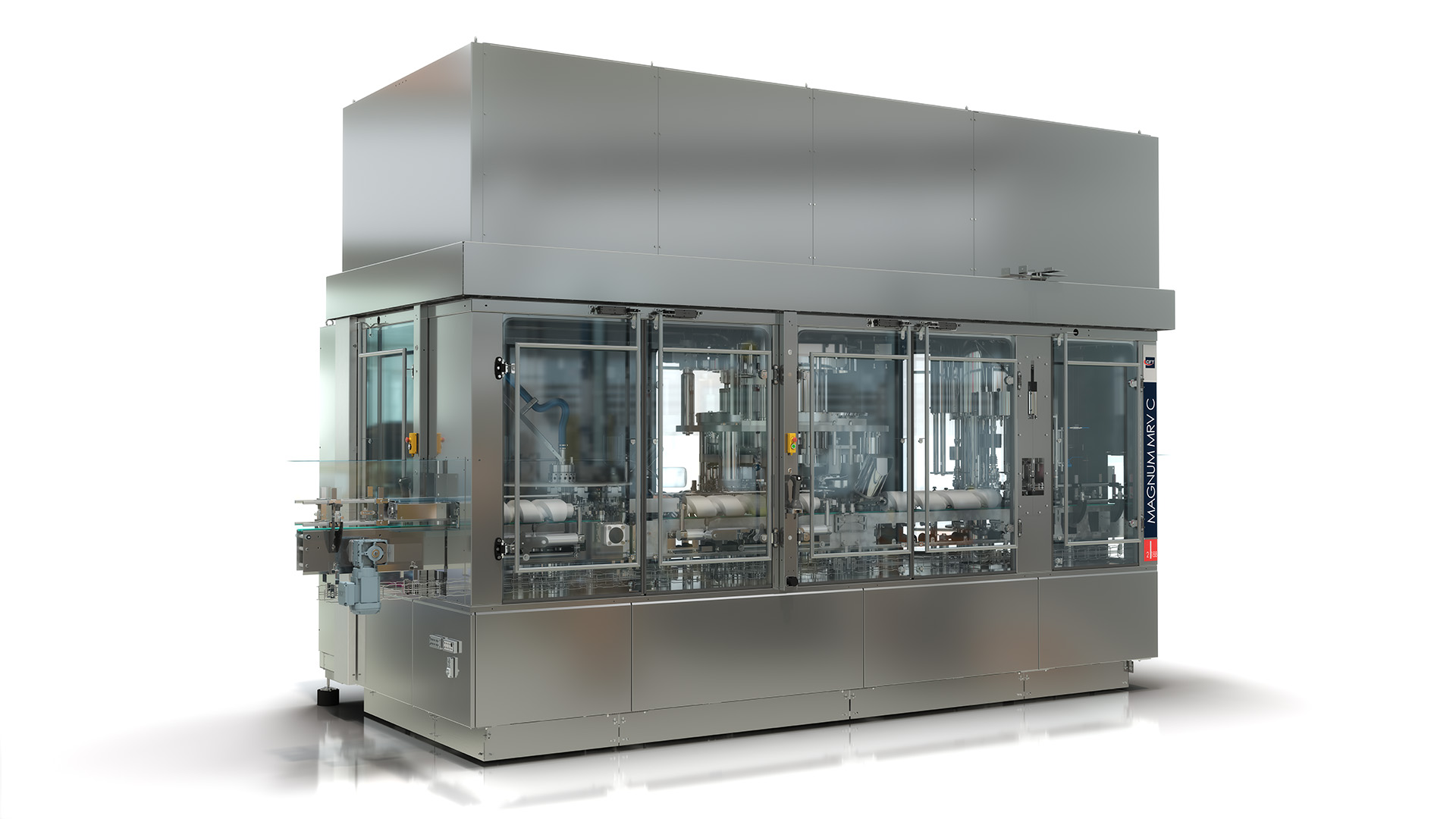
Spreadable cream packaging line
The global spreadable creams market is rapidly growing, driven by increasing demand for tasty and functional products, from chocolate and hazelnut spreads to plant-based butters and organic or sugar-free options. To meet consumer expectations and ensure high product quality, companies in this sector need processing and packaging systems that are reliable, precise, and designed to handle high-viscosity products.
At CFT, we focus on the final stage of the production process: we design and manufacture highly specialized filling and end-of-line solutions, developed to ensure accurate filling, minimize waste, and optimize production performance. Our technologies, such as the Magnum MRV-C rotary volumetric filler, are specifically engineered to address the unique challenges of spreadable cream packaging, delivering maximum efficiency even in complex conditions.
Let’s take a look at the key stages of a spreadable cream packaging line, the most suitable systems, the strengths of CFT’s filling technology, and the value of our after-sales service.
Key stages of a spreadable cream packaging line
A complete spreadable cream packaging line includes a series of steps, from product handling to secondary packaging. In this context, the final stage of the process plays a strategic role in ensuring operational continuity and consistent product quality.
The process begins with the transfer of the cream to the packaging area. After being taken from the storage or preparation zone, the product is conveyed into a feed tank where it is kept at a controlled temperature to facilitate subsequent operations.
Next comes the filling phase, the core of the packaging process. Here, the cream is dosed into its final containers (jars, pots, single servings, etc.). The filling system varies depending on the type of product, viscosity, and required configuration, and can operate continuously or intermittently based on the layout.
After filling, containers move to the closing stage, which may involve sealing or mechanical capping. Once closed, products are labeled and, if needed, pass through a cooling tunnel to stabilize the temperature before final packaging.
The process concludes with secondary packaging operations: cartoning, multipack formation, and palletizing for logistics. Each step is modular and can be integrated according to production requirements and the desired level of automation.
This modular approach enables the creation of flexible, scalable systems easily adapted to different types of spreads and packaging formats.
Packaging line for spreadable creams
Due to their characteristics, high viscosity, temperature sensitivity, and variable density, spreadable creams require specially designed packaging systems to handle specific technical challenges. At CFT, we develop customized solutions built around our flagship technology: the Magnum MRV-C rotary volumetric filler, recently enhanced to deliver even higher performance.

The MRV-C filling machine
The MRV-C filler is the is the key machine in spreadable cream packaging line and represents a major advancement in the handling of high-viscosity products such as chocolate creams, plant-based butters (e.g., peanut, pistachio), and spreads with particulates. With a capacity of up to 21,000 containers/hour and full compatibility with all standard formats (from single-serve to family packs), the MRV-C offers total flexibility and adaptability.
Key technical features include:
- Rigid structure with upper and lower bearings for reduced vibration and maximum dosing stability.
- Individually adjustable pistons with rounded-profile rollers for micrometric control of each cylinder.
- Temperature-controlled tank with hot water jacket to stabilize viscosity during hot filling.
- Internal scraper system for optimal tank emptying and minimal product waste.
Six competitive advantages of our filling solutions:
- High-Precision Dosing
Accurate, repeatable filling even with complex products. Advanced mechanical stability and micrometric adjustments help prevent dripping, overfilling, and product loss. - Air Entrapment Control
Our bottom-up filling system drastically reduces turbulence and air incorporation, essential for maintaining consistency, appearance, and shelf life—especially in sensitive spreads like chocolate or nut-based creams. - Filling Flexibility for All Types of Creams
Our solutions adapt to hot, cold, homogeneous, or particulate products thanks to the use of nozzles selected according to viscosity. This ensures smooth flow and product integrity. - Product Waste Reduction
Internal scraper system enables nearly complete tank emptying, minimizing waste and increasing yield per production cycle. - Cost Savings in Production
Our high-precision dosing—accurate to 3 sigma—ensures 99.7% of containers stay within tolerance limits, reducing overfill and saving up to €336,000 annually on a 12-million-jar output. - Integrated Process Monitoring
Thanks to our integrated monitoring system Memento™, users can monitor production parameters in real time, analyze shift performance, track operations, and plan predictive maintenance for improved quality and efficiency. - Product Testing in the Innovation Lab
At our Innovation Lab, we conduct real product trials to optimize filling parameters during the design phase. This reduces risk, shortens time-to-market, and ensures long-term satisfaction.
Our After-Sales Value
Purchasing a spreadable cream filling line from CFT means more than acquiring a machine—it means choosing a long-term technological partner offering continuous support, expertise, and innovation.
Our after-sales services include:
- Installation and commissioning with specialized technicians.
- Operational training for production and maintenance teams.
- Remote and on-site support with fast response times.
- Supply of original spare parts and tailored preventive maintenance plans.
- Software upgrades and retrofits to keep systems at peak performance.